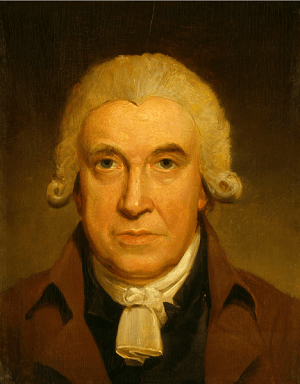Define 1 Watt of PowerWatt power is a measure of electrical power that describes how electrical energy is converted into valuable work. It bears the name of Scottish industrial expert and inventor James Watt, who created the steam engine. In electrical terms, a watt is the product of voltage and current, which means that the higher the voltage, the higher the wind, and the higher the wattage. The International System of Units (SI) has a derived power measure called the Watt, equivalent to one joule per second. In other words, it calculates the total energy produced (or used) over a certain period. Watts can measure power through electricity, mechanical work, or heat. 
The Watt is a fundamental unit of measurement. It allows us to calculate the energy consumed or produced by an electrical circuit, the rate at which work is done, or heat energy transfer. In addition to these and many other scientific uses, it calculates the electrical output. In the 21st century, the Watt is still the standard unit of power and energy, and it is used in many different fields, from electronics to engineering. It is so widely used that imagining a world without the Watt is hard. Importance of WattThe Watt measures the power of electric motors and appliances, such as light bulbs, computers, and refrigerators. It is also used to measure the output of electrical generators, such as those used in solar power systems. In addition, the Watt measures the rate at which a device generates or consumes energy. History of Watt PowerThe Watt is a unit of power named after the Scottish engineer and inventor James Watt (1736-1819). Watt was widely known for his improvements to the steam engine's efficiency, allowing it to be used in various applications. Watt first developed his idea of the Watt while working on a steam engine in 1769. He noticed that the engine's efficiency was related to its power output, and he attempted to measure how much power the engine was producing. After some experimentation, Watt concluded that a horse could do about 22,000 foot-pounds of work per minute, and he used this figure to calculate the engine's power output. He then decided to use this figure to create a unit of measure for power, which he called the Watt. The Watt quickly became a standard unit of measurement for power. It measured the output of engines, turbines, motors, and other mechanical devices. It was also used to measure the electrical energy produced by dynamos and other electric machines. Today, the Watt is still used as a measure of power. It measures the power output of engines, turbines, motors, and electric generators. It is also used to measure the power consumption of electrical appliances such as computers, televisions, and refrigerators. In addition, the Watt is used to measure the power of lighting systems and can even be used to measure the power of lasers. The Watt is also used to measure the power of solar panels, which convert sunlight into electricity. Solar panels are becoming increasingly popular for providing electricity in remote locations without access to the electrical grid. The Watt is used to measure the power output of solar panels, which allows people to determine how much energy they can expect to receive from them. The electricity production of wind turbines is also measured using the Watt unit. The Watt is used to quantify the power production of wind turbines, which use the kinetic energy of the breeze to create electricity. Wind turbines are becoming increasingly popular for providing electricity in rural areas, and the Watt is used to measure their power output. The Watt is a versatile unit of measure that has been used for centuries to measure the power output of various mechanical and electrical devices. It is a crucial component of the contemporary world and will be utilized for a long time. Definition and Units of Watt PowerThe International System of Units (Symbol: W) Watt is an electricity measure. It is the speed at which one joule of energy is transferred every second. In other terms, it refers to the pace at which energy or work is expended. The Watt is a robust measure, not an energy quantity. While energy is the ability to do labor, power is the pace at which energy is used. The rate at which energy is transformed into work, or vice versa, is measured by the Watt. The Watt is most frequently used to gauge the power production of generators, motors, and electrical equipment. It is also employed in many other areas, such as determining the strength of a laser or an automobile engine. The Watt can be calculated by multiplying the voltage (V) by the current (I) in the circuit. The equation is P = V x I, where P is the power in watts. For example, if a course has a voltage of 10 volts and a current of 2 amps, then the system's power output is 10 x 2 = 20 watts. The pace of energy transmission is also gauged using the Watt. For instance, watts are used to quantify the strength of a light bulb. More energy is used when the power is more significant. The pace at which energy is produced can also be gauged using the Watt. For example, a solar panel is rated in watts, and the higher the wattage, the more energy the committee produces. The Watt is a fundamental unit of measure for understanding energy use and production. It is also a good unit for understanding power output. It is important to note that the Watt is not a unit of energy but rather a unit of power. The quantity of power produced or used when one joule of energy is transmitted in one second is measured in Watts. It has the same point as a single or square joule per second. About James WattJames Watt, a Scottish mechanical engineer, and innovator, made significant advancements to the Newcomen steam engine that paved the way for the industrial revolution in Britain and around the globe. He was born on January 19, 1736, in Greenock, Scotland. He later developed the steam engine, and in 1763 he patented the first commercial steam engine. Watt's contribution to modern engineering was immense. He created the horsepower concept and measured power output regarding work done. This concept was later used to establish the measure of power known as the Watt. Watt's work inspired the metric system, which is still in use today, and he was also instrumental in introducing the concept of efficiency for machines. His invention of the steam engine revolutionized the world of engineering and technology and laid the foundation for modern industry. 
Contribution of James Watt
What is the Difference Between Power and Energy?
Define One Watt PowerA joule per second, or one Watt, is a unit of energy measurement or electricity. It gauges the pace of energy transmission or conversion. The speed at which energy is used or transmitted is measured in watts. The letter W represents a watt. A 100-watt light lamp, for instance, uses 100 joules of energy every second when it is turned on. This indicates that the light source produces 100 joules of light every second. Another example of a watt is a cell phone charging adapter. This adapter is rated at 5 watts to transfer 5 joules of energy from the wall outlet to the phone each second. A 5-watt adapter is typically used to charge a small device, like a cell phone, while a higher-wattage adapter (15-20 watts) is usually used to set up a laptop.
ConclusionWatt is a unit of measurement that can be used to measure the rate of energy consumption, production, heat transfer, or electrical current. It is a valuable way to compare the power consumption of different devices and measure the output of an engine or motor. |
 For Videos Join Our Youtube Channel: Join Now
For Videos Join Our Youtube Channel: Join Now
Feedback
- Send your Feedback to [email protected]
Help Others, Please Share









